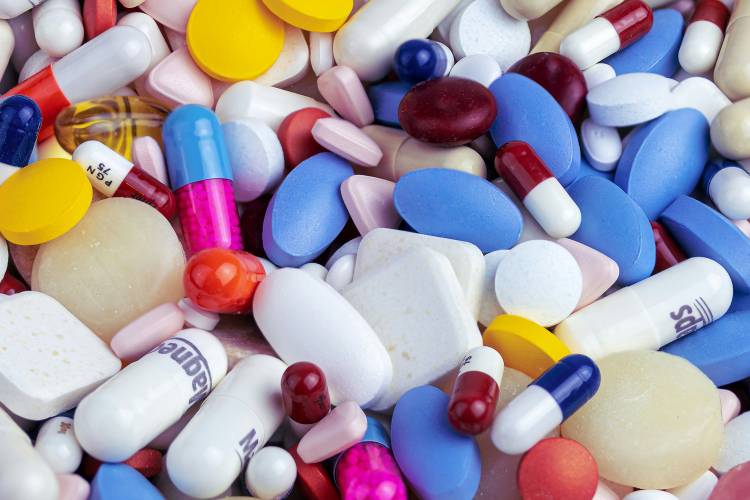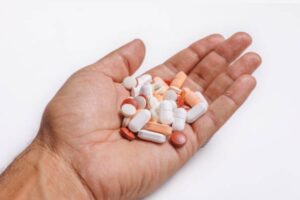
India’s pharma industry has, for decades, enjoyed global renown as the pharmacy of the world, supplying low-cost generic drugs to both developing nations and affluent markets like the United States. The model has served the country well—Indian companies account for around 40% of the generic drugs consumed in the US, where 90% of prescriptions dispensed are generics. This export-led strategy brought scale, market penetration, and international credibility. But it also bred a dependence that now threatens future growth.
The global generics business is no longer what it once was. Consolidation among buyers, persistent price erosion in key markets, and the emergence of manufacturing quality issues have begun to weigh heavily on Indian firms. Profit margins are narrowing even as volumes remain robust. While the generics wave is far from over, the time has come for Indian drugmakers to reposition themselves for higher-value opportunities.
READ | US-India trade deal stalls over farm sector access
Patent cliff brings opportunity—and risk
A major opening lies ahead. Over the next five years, small-molecule drugs worth $63.7 billion are expected to go off-patent in the US—a 65% increase over the preceding five-year period. More broadly, the US and EU markets together will see a cumulative $180 billion worth of medicines lose patent protection by 2035. These are not just any drugs; many of them are blockbusters in their therapeutic categories.

Indian companies, with their established formulation expertise and familiarity with US Food and Drug Administration (FDA) regulatory processes, are well-positioned to benefit. Recent FDA approvals granted to firms like Lupin, Cipla, and Aurobindo validate this edge. For example, Lupin received FDA approval for two complex generics in June, including prucalopride tablets and an ophthalmic gel that offers 180-day market exclusivity. These are not commoditised, first-generation generics, but drugs that demand scientific rigor and manufacturing sophistication.
However, the opportunity is not without risk. The same US market may soon become less welcoming if trade policy shifts. Former President Donald Trump, now the Republican nominee, has revived talk of imposing 25% tariffs on pharmaceutical imports to boost domestic production. Indian exporters, even those that are highly competitive, must prepare for heightened volatility stemming from global trade politics.
Margins squeezed, filings declining
One visible sign of stress in the generics space is the steep decline in new filings. According to Chemindigest’s review of FDA data, Abbreviated New Drug Application (ANDA) filings are down 25% year-on-year. This suggests a shift in industry priorities—from chasing volume to protecting margin. In a market where prices can fall 10–15% annually, launching a new generic makes economic sense only if the product is differentiated or enjoys exclusivity.
Moreover, buyer consolidation in the US means fewer large purchasing entities dominate the market, using their scale to extract better prices. This has particularly hurt smaller Indian exporters who operate on thin margins and lack the balance sheet to absorb pricing shocks.
Innovation must take centre stage
The path ahead lies in developing innovative therapies, including biosimilars, complex generics, and novel drug delivery systems. These segments not only command higher margins but also face less price competition. Chronic diseases such as cancer, diabetes, and autoimmune disorders are driving global demand for such treatments.
Sun Pharma’s partnership with Italy-based Philogen to expand its immunotherapy pipeline is a case in point. Such strategic collaborations allow Indian firms to leapfrog into high-tech areas without incurring the full cost of discovery-led R&D. Similarly, Cipla’s investment in respiratory therapies and Dr Reddy’s progress in biologics show that the shift is underway, albeit unevenly.
That said, India still invests less than 8% of its pharma revenue into research and development, compared to over 20% in developed markets. If the country wishes to be taken seriously as a hub for innovation, this number must rise—and with it, the public infrastructure to support biotech research.
Reputation under watch
The reputation of the Indian pharmaceutical industry has taken a beating in recent years, with reports linking poorly manufactured Indian cough syrups and contaminated eye drops to multiple fatalities across countries including Gambia, Uzbekistan, and the United States. While FDA warning letters to Indian plants have declined in 2025 compared to earlier years, the damage to global trust is far from repaired.
Compliance is no longer a regulatory formality—it is a commercial imperative. The government’s plans to overhaul the Drugs, Cosmetics and Medical Devices Bill must focus not only on tighter regulation but also on equipping domestic testing laboratories and improving pharmacovigilance systems. Quality assurance will determine whether Indian firms are seen as reliable long-term partners or low-cost, high-risk suppliers.
Pharma industry: Policy signals and investment trends
Policy support can accelerate this pivot. While India’s Production-Linked Incentive (PLI) scheme for pharmaceuticals includes support for some complex generics and APIs, incentives for biologics and high-value therapies remain thin. Venture capital activity in India’s biotech space is modest, and foreign investment still favours the traditional generics model.
More favourable tax treatment for R&D, faster regulatory approvals for indigenously developed drugs, and government-backed biotech parks could tilt the scale. Indian companies would also do well to pursue more strategic acquisitions and global licensing deals—ways to access innovation without waiting a decade for in-house capabilities to mature.
The Indian pharmaceutical industry cannot afford to remain tethered to the generics model. The next phase of growth must come from an innovation-led transformation—anchored in research, fuelled by investment, and steered by a policy framework that rewards quality and risk-taking.
Generics will continue to play a role, especially in domestic healthcare delivery. But global competitiveness will increasingly be defined by scientific depth and manufacturing excellence. If Indian drugmakers can build reputations not just as cost leaders but as reliable producers of high-quality, next-generation medicines, they can secure a place at the top table of global pharmaceutical innovation.
